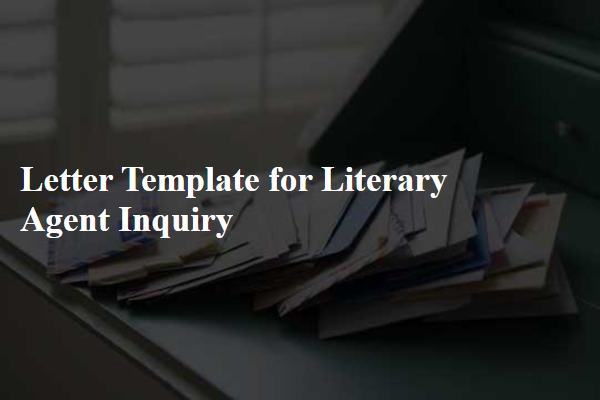When it comes to navigating the complexities of royalty disputes, having the right approach is essential. Crafting a well-thought-out letter can set the tone for resolution, ensuring that all parties feel heard and respected. In this article, we'll explore a useful template that helps streamline communication and fosters positive dialogue in these often-sensitive situations. So, let's dive in and uncover the keys to effective dispute resolution!

Clear identification of the parties involved
In a complex royalty dispute, clear identification of the parties involved is crucial for transparency and effective resolution. The first party, typically the Licensor, represents the entity granting rights to use intellectual property, such as a publishing company or record label. The second party, the Licensee, is the individual or organization receiving those rights, often an author, musician, or business entity. Additional parties may include distributors, such as retail outlets or streaming services, responsible for the dissemination of the licensed material. Identifying all stakeholders, including their roles and contributions to the royalty streams, ensures that all interests are represented during discussions, fostering an environment conducive to equitable negotiations and resolutions.
Detailed account of the issue or dispute
A royalty dispute often arises in the entertainment industry, particularly involving musicians, authors, or filmmakers. This disagreement typically centers around the calculation of royalty payments, which can be influenced by various factors such as contract interpretation, revenue sources, and distribution methods. For instance, an artist may assert that the record label failed to disclose all revenue streams, like streaming platforms (Spotify generating over $9 billion in revenue during 2022) or merchandise sales. Additionally, disagreements may involve the percentage of royalties owed, which can be dictated by complex agreements. In particular, clauses related to advances, recoupments, or specific territorial limitations can lead to misunderstandings. Furthermore, the timeline for payments can be contentious, with delayed invoices or miscalculations exacerbating tensions. Parties often seek resolution through negotiations, mediation, or legal proceedings, depending on the severity and complexity of the disagreement.
Reference to relevant contracts or agreements
In disputes regarding royalties, specific contracts or licensing agreements must be meticulously reviewed to ensure compliance with stipulated terms. Royalty calculations often hinge upon unique factors such as percentage rates, royalty bases, and payment schedules outlined in documents like publishing agreements or licensing contracts. For example, a music licensing agreement may elaborate on distribution percentages (typically 10-15% for physical sales, varying for digital platforms) while detailing specific scenarios that trigger royalty payments, such as radio play, digital streaming, or synchronization usage. Discrepancies in reporting may arise from misunderstanding contract language, necessitating complex analysis of clauses governing payments and adjustments. Legal precedents from cases, such as the 2012 "MGM Studios Inc. v. Grokster, Ltd." case, can also provide insight into interpretation standards for contract obligations in royalty disputes. Each involved party must assess obligations outlined in these agreements to reach a fair resolution.
Proposed resolution or compromise
In a royalty dispute between two parties, a proposed resolution could involve a recalibration of revenue-sharing percentages, establishing a transparent accounting process that includes quarterly audits, and setting a predetermined timeline for payment disbursements, ensuring all involved parties maintain equitable access to earnings. Additionally, implementing a neutral third-party mediator to facilitate future negotiations can help foster ongoing communication and prevent misunderstandings. This agreement could be formalized in a legally binding contract, detailing specific performance metrics and outlining consequences for breaches, thereby ensuring all parties have a clear understanding of their rights and responsibilities.
Contact information for further communication
Royalty disputes can arise in various industries, including music, publishing, and intellectual property. Proper resolution involves clear communication between involved parties. Contact information should include names, titles, email addresses, and phone numbers of key representatives from both sides to facilitate ongoing discussions. Providing addresses, such as physical office locations or legal representation offices, ensures formal documentation can be shared efficiently. It is important to specify preferred communication methods, such as phone calls or formal letters, to streamline the negotiation process and minimize misunderstandings. Having this information organized aids in a swift and transparent resolution.
















Comments